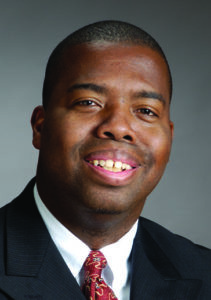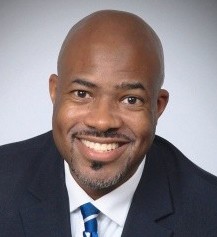“It happened again!” That was my thought when I got up to leave the church interview.
Although this was pre-social media, I can remember it like it was yesterday. A very well-meaning friend sent my name into the medium-size church located in the Panhandle of Florida that was looking for a student pastor. I could tell by the look I was given that the church hadn’t put two and two together to realize I am a person of color. Although they had my name, which is Kenyan, I guess they hadn’t thought it through.

Maina Mwaura
So when I walked into the room, I could tell — or better yet, sense — the shock on their faces that I am Black. As if “the look” wasn’t telling enough, the questions toward the end of our conversation gave away the secret. One person in the room asked me: “You’re a person of color, will you fit in here?”
That was the moment I knew they were showing their true colors. I would love to say this is the only time I experienced this, but as Christopher Harris, who is co-writing this opinion piece with me, will tell you, this is something many ministers of color have had to face when applying for majority-color churches.

Christopher Harris
After the George Floyd murder, both Christopher — who founded and leads the organization Diverse Church Jobs — and I noticed a ringing of the bell in many majority-culture churches to hire people of color to their leadership teams. However, here we sit almost two years later, and when you look at websites of many majority-color churches, it’s still the same website pre-George Floyd.
Last week, Brian Flores, former head coach of the Miami Dolphins, stood up courageously to tell his story of racism and discrimination within the NFL. Far too many people of color felt the sting and understood the position in which Flores finds himself.
Through his work with churches, Christopher knows some basic steps must be taken for majority-color congregations to bring people of color on board. But first we need to talk about Brian Flores and the Rooney Rule.
The Rooney Rule was established by the NFL in 2003 to ensure that coaches and executives of color within the NFL are given a “fair shot” at the employment opportunities available. The rule requires NFL teams to interview candidates of color for head coaching and senior football operation positions.
Have you ever stopped to consider what kind of world we live in that something like the Rooney Rule is even necessary? That a rule is necessary to ensure the “good ol’ boy network” doesn’t really guide the hiring processes but that the best (and most qualified) candidates, regardless of their color, are chosen?
To be sure, churches have these same networks and back-door networking opportunities that often are void of diversity.
While the vast majority of churches in America are mono-ethnic, those that do have diversity in their audiences still widely hold a white culture in expression, music, language and priorities.
With regard to hiring and engagement of staffing a church for diversity, the assumption in discussions around diversity are often whether or not we lower the standards and qualifications just to ensure diversity is prioritized.
“It assumes that whites — white people, white churches, white church practices — are the standard.”
This biased perspective assumes a few things. It assumes that all whites are automatically qualified and that people of color, collectively, are not. Second, it assumes that whites — white people, white churches, white church practices — are the standard. Historically, a case could be made for the actual opposite.
The richness of mainstream music, clothing, art, theories and more can be traced to origins in artists and creators of color. Which perhaps is why when churches want diversity, the search for a person of color is reduced to finding a person who “entertains” the church through worship or dance or graphic design — not a person who “educates” the church in teaching, leadership and discipleship. And church roles for people of color surely stay away from budgeting and strategy.
If a church really wants to have honest discussion around diversifying its congregation, staff and direction, it must diversify those at the table of authority and decision making. The diversity must be in the elder board, the deacons, the worship planning team, the strategic planning, the budget deliberations. These discussions must involve honest dialogue, not platitudes and nice public relations decisions.
In essence, a church must do what our nation must do. A church must embrace systemic change if it really wants to honor the rich diversity within the body of Christ. And that is, after all, a biblical idea.
Understanding and appreciating this last statement means a church must have a robust and theologically sound approach to the Bible’s framework around diversity, justice, mercy and equity. There are lightning-rod phrases today that have divided the church unnecessarily and ignorantly.
“Pastors, staff members, deacons, elders, committee members, ministry leaders must have more than their one ‘Black friend.’”
It is clear that the Bible teaches and is inclusive regarding diversity. Yet baked into the essence of color and color lines is misguided theology. Uprooting that bad theology will take not only truth, but spiritual warfare, repentance and a recovery from the damage done.
Finally, if churches are going to move forward in this discussion around diversifying, this must become personal. Pastors, staff members, deacons, elders, committee members, ministry leaders must have more than their one “Black friend.” They must have a diversity within their inner circle that represents varied views and experiences and ideas that allows them to learn from people who are different from them.
Can you imagine if every pastor and ministry leader today actually lived like Jesus and went further than the Parable of the Good Samaritan? What if every pastor and ministry leader actually had the robbed man on speed dial on their phones or as a close friend on social media or regularly had dinner and coffee with them? Our world would be different. Our circles would be different. Our conversations would be different. But most of all, our churches would be different.
That is the goal: Different churches that reach a different world, a world that looks like the Bible and represents Jesus.
Maina Mwaura is a freelance writer and communications consultant who lives in the metro Atlanta area. A native of Orlando, Fla., he earned a bachelor of science degree in communications from Liberty University and a master of divinity degree from New Orleans Baptist Theological Seminary. Christopher Harris serves as executive director of DiverseChurchJobs.com and as executive pastor at Crossover Church of Tampa. He also is host of The Wise Idea podcast. Christopher is a graduate of Florida State University and the University of South Carolina.
Related articles:
Six ways white and multiethnic churches can heal the wounds of racial trauma | Opinion by Joel Bowman Sr.
The ‘MAGA faction’ could be a hindrance for multiracial congregations
Barna: Racism a reality even in multiracial churches
Contrary to what you’ve heard, study finds churches thrive with racial diversity
More churches defined as racially diverse but that doesn’t lead to racial justice work
Study: church diversity does not guarantee diverse thinking, beliefs


